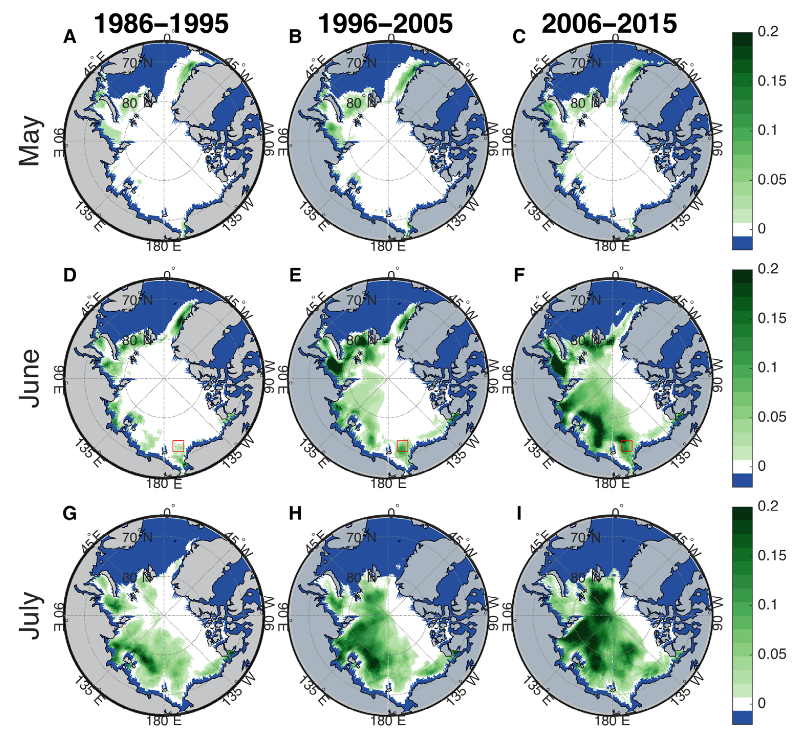 In 2011, NASA spotted phytoplankton (algae) growing underneath the Arctic sea glaciers. Many small ponds appeared with greenish colors and scientists were puzzled why this was happening. Years later, on March 31, 2017, scientists from NASA discovered why the greenish tone was increasing. The ice thinned so much that there was enough light going through the glaciers to help feed and grow more phytoplankton. Researchers were so shocked because they thought the conditions were too rough to help phytoplankton grow.
In 2011, NASA spotted phytoplankton (algae) growing underneath the Arctic sea glaciers. Many small ponds appeared with greenish colors and scientists were puzzled why this was happening. Years later, on March 31, 2017, scientists from NASA discovered why the greenish tone was increasing. The ice thinned so much that there was enough light going through the glaciers to help feed and grow more phytoplankton. Researchers were so shocked because they thought the conditions were too rough to help phytoplankton grow.
Researchers say that in order for phytoplanton to bloom and survive, they need sunlight to make sugars, water, and carbon dioxide. In this case, the Arctic ice is thin enough and has all the resources to allow the phytoplankton to bloom. The sunlight that hits the Arctic glaciers gets reflected back into space, but since the glaciers are melting, the light being reflected has gotten darker. The dark green pools allow the sunlight to pass through the water since the color of the water is getting darker.
“Using mathematical modeling, the researchers found that while melt ponds help the phytoplankton grow by allowing sunlight, thinner ice is the main culprit for the greening of Arctic ice,” says Horvat, who is a graduate student in applied mathematics at the John A. Paulson School of Engineering and Applied Sciences (SEAS) at Harvard University.”
To sum it up, only two decades ago, about 3-4 percent of the Arctic allowed pythoplankton to bloom. Today’s new research says that now 30 percent of the Arctic’s ice is thin enough to let phytoplankton bloom. “In fact, the Arctic sea ice has thinned by about 3 feet (1 meter) over the last 30 years, Horvat said”. Because of global warming and rising temperatures, the Arctic glaciers will continue to melt until the entire Arctic area is covered with phytoplankton. Life in the Artic sea will change forever.
-Natalia Oganesian







